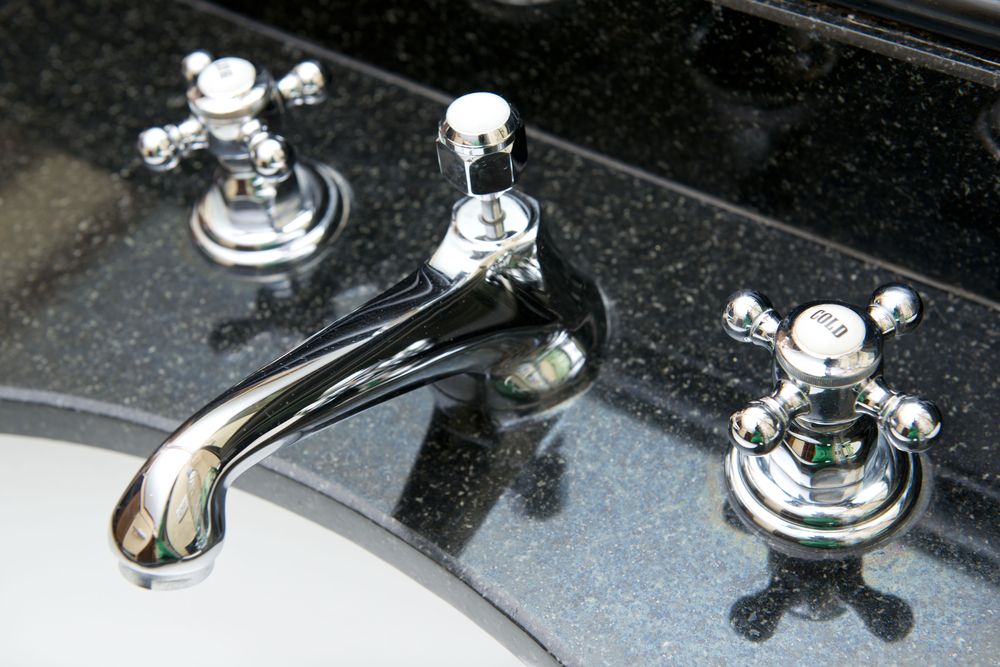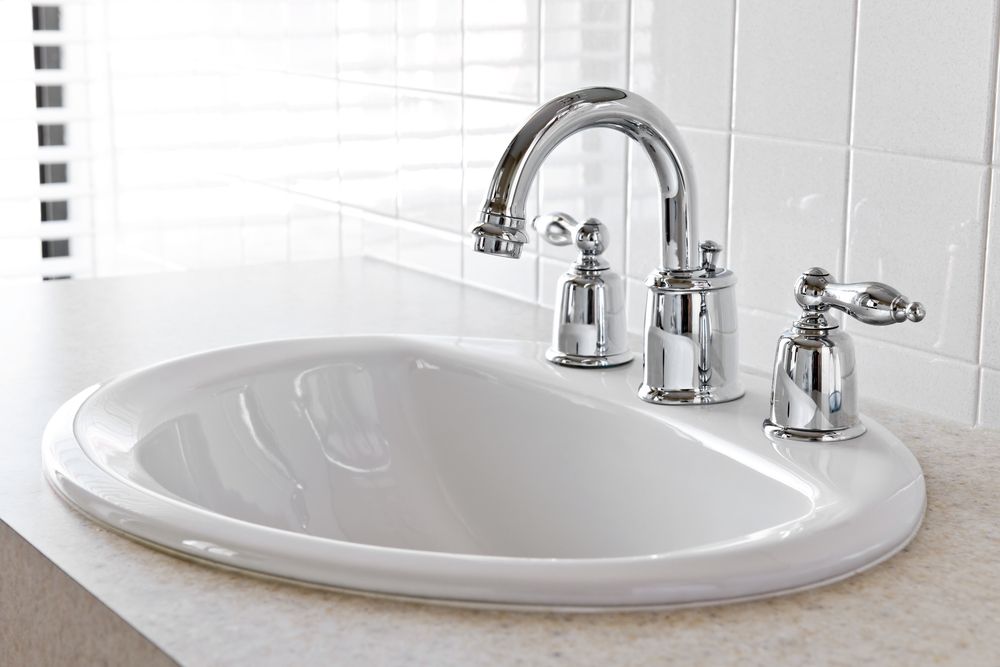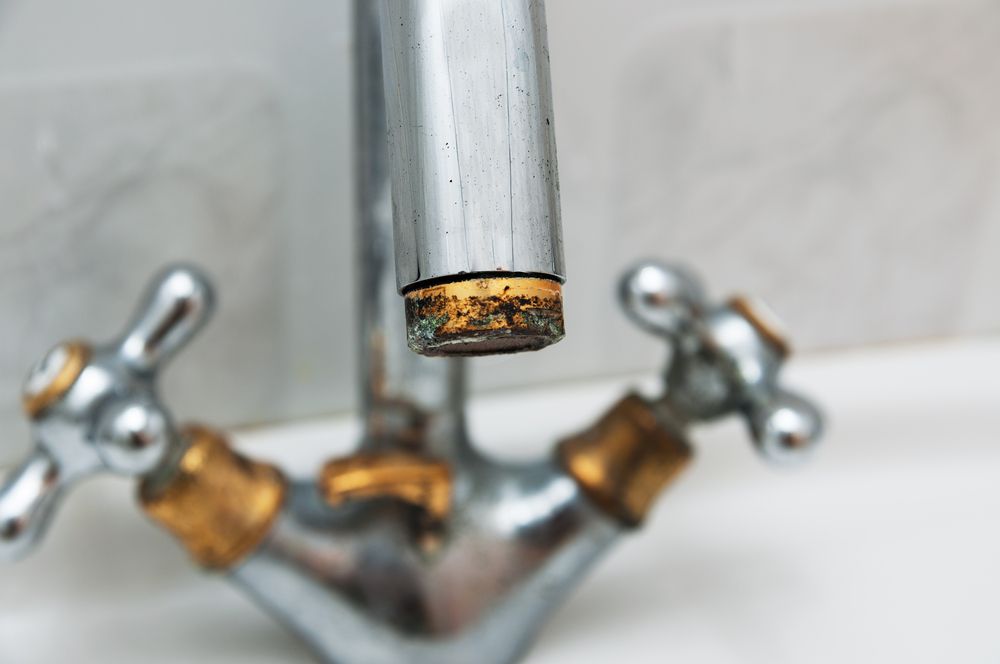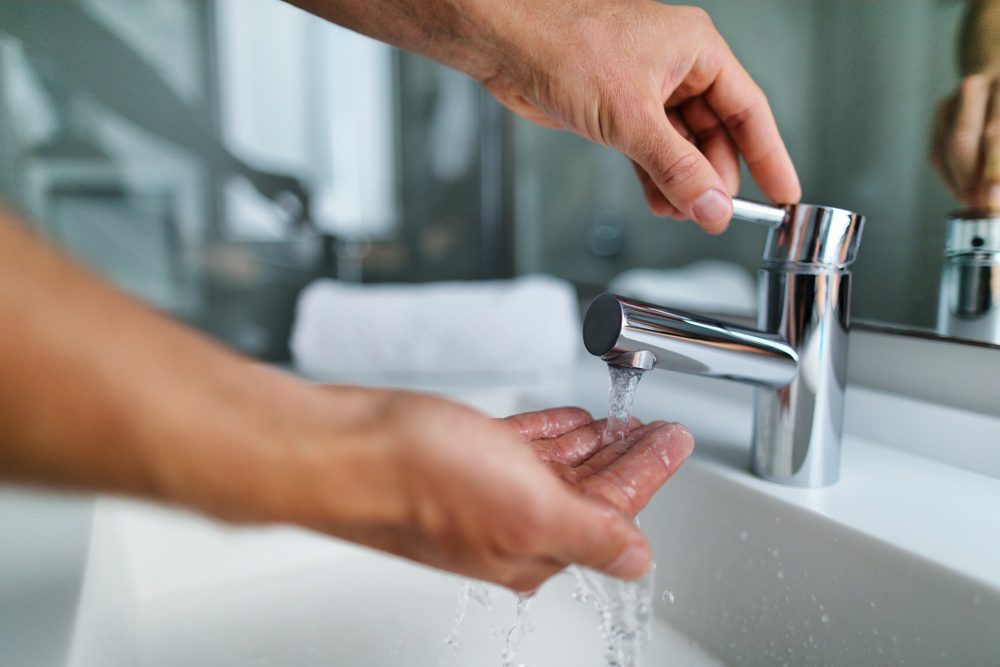
Sinks don’t last forever. When it’s time to upgrade your sink, you want to make the best choice—but not so fast. Before you begin shopping, you’ll first want to answer two questions: What current sink do you have, and what type of faucet are you looking for? Identifying the type of sink you have and the type of sink you want is a crucial step to upgrading. It can save you from getting a sink that suffers from the same leaky faucets as your previous one. Or help you successfully transition from a single handle sink to a double handle sink. Considering replacing your faucet? Commonly, it boils down to four types of faucets.
Types of Faucets
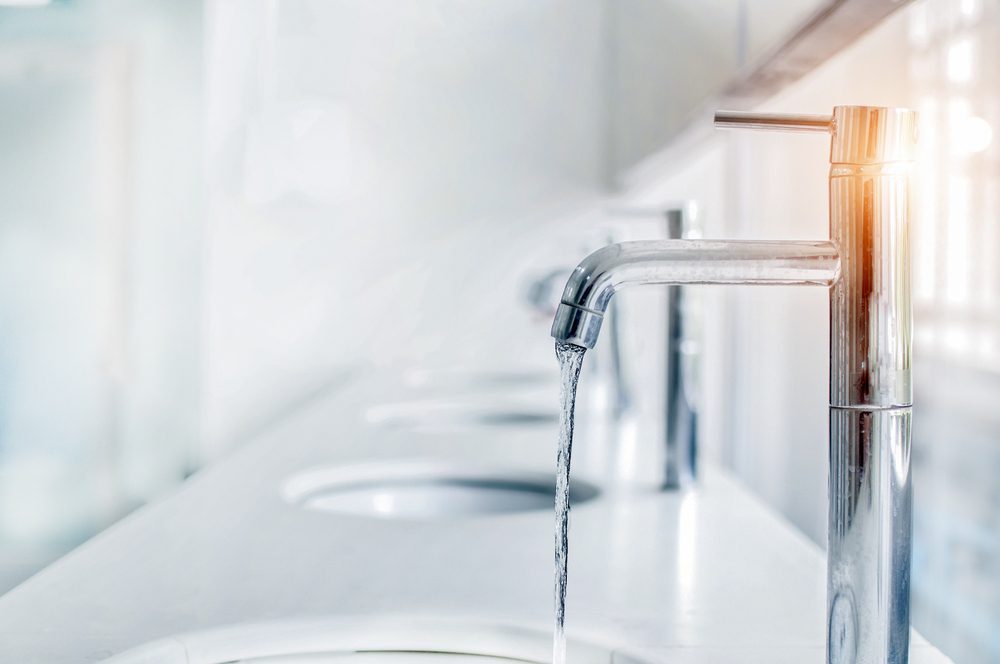
Ball Faucet
As the first type of washerless faucet, the ball faucet most commonly resides in older homes. Ball faucets have a single handle that uses a slotted metal ball inside them to operate. The slots in the ball align with the cold and hot water inlets to control the flow and temperature of the water exiting the faucet. As you move the handle, the ball controls the flow of water. With many different components working together, ball faucets are more likely to leak than disc or cartridge faucets.
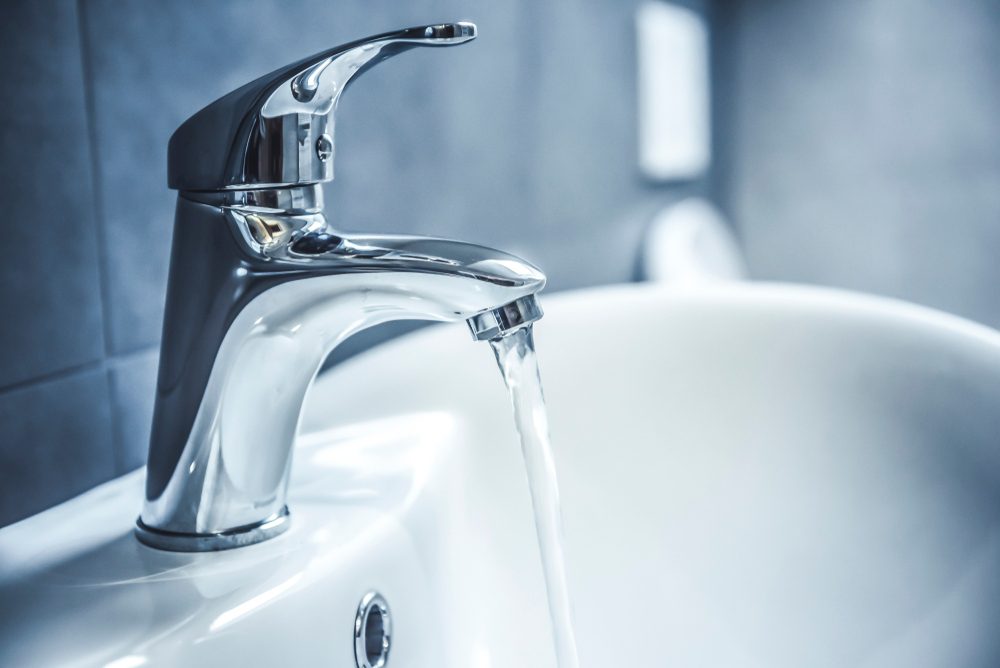
Disc Faucet
Serving as a more modern type of faucet, disc faucets have a single lever with a wide cylindrical body. This faucet contains a pressure balance cartridge that blends hot and cold water and two ceramic discs at the bottom for operating.
Tips & Insights: Why Am I Receiving No Hot Water In My House?
Its motion is fairly simple: raise and lower the handle to control the flow of the water; move the handle side-to-side to control the temperature. Disc faucets are known to be ultra-reliable and of good quality. Additionally, they require less repair.
Compression Faucet
Compression faucets date back to the first demand for indoor plumbing. You’ll typically notice them in older homes. But recently, these faucets are making a major comeback in newer homes with modern, rustic updates. Like cartridge faucets, compression faucets have separate hot and cold water handles.
Compression faucets operate with the help of a compression stem, a large diameter screw, with a washer at the end of it pressing against a valve seat. When the compression is tightened, a rubber seal presses against a valve seat to restrict water flow. In other words, you must completely tighten the handle of a compression faucet to turn off the water flow.
Overall, compression faucets are less expensive compared to other faucets. However, they are more likely to leak and will require frequent maintenance.
Double-Handle Cartridge Faucet
Double-handle cartridge faucets work in the same way as compression faucets. They both contain separate handles for hot and cold water. However, cartridge faucets are far smoother and more consistent. You simply turn these faucets halfway to turn the water on and off.
This type of faucet operates by the cartridge, a plastic piece located within a valve connecting to a handle. When you turn a faucet handle, the handle will move the cartridge within the valve—this operates the flow of water leaving the faucet. Cartridge faucets operate wonderfully and not to mention affordably priced. Replacing this type of faucet is also fairly simple since they require few parts.
Tips & Insights: What Are Air Conditioner Evaporator & Condenser Coils?
4 Signs It’s Time To Buy a New Sink
Thinking it’s time for a sink replacement? Like many fixtures in our home, we usually don’t worry about the life cycle of your sinks until something happens. Then we scramble for a new sink install when it’s too late. To help you save money on your water bill, we have compiled a list of signs it’s time to buy a new faucet.
Damage
Physical damage? It’s hard to ignore. Appearance alone can help you determine if you need to replace your sink. Notice hairline cracks on your sink? Cracks are major indicators that it’s time for a replacement. Pesky cracks can happen over time, seep into the porcelain and cause erosion. This is a gradual destruction that seeks no end—once it starts, it’s hard to stop.
Rusty Tap
Rust is a sink’s worst nightmare. Rust eats away at every type of faucet and can even contaminate your water supply, making it hazardous to do basic activities such as brushing your teeth or drinking water. Even worse, rust can travel to your pipes, racking up costly plumbing repairs. If rust enters your system, you will need a professional plumber in Alexandria, VA to replace your pipes before installing a new sink.
Low Volume of Water
Is water trickling out of your faucet instead of flowing out? Chances are, you need a new sink or sink replacement. You most likely have a faucet problem on your hands in the form of leaking or decay. Either two can cause severe water damage that may go unnoticed until a licensed plumber examines the issue.
Sink Keeps Getting Clogged
Although a clog might inevitably happen from time to time, persistent clogs are another story. Constant debris buildup suggests a bigger issue that a new sink install should resolve. Have a professional plumber examine pipes for any damage. Causes can vary from a broken sink drain to a corroded pipe.
Sink Installation & Replacement Services
Do you want to upgrade your bathroom with a new sink? The team of local plumbers at Snell have you covered. We offer sink installation and replacement services to homes in your area. Our staff of local technicians provides dependable sink replacement services in areas of Virginia such as Arlington, Ashburn, Reston, and Alexandria.
In addition, our team of technicians offers other types of emergency plumbing services such as sump pump repair, drain cleaning, water heater repair, sewer line replacement, and gas line installation. Give our plumbers a call by phone at (703) 543-9649 or request an appointment online to receive help with repairs and upgrades.
Tips & Insights: What Is a Submersible Sump Pump?


